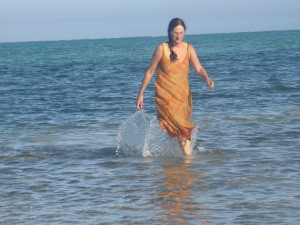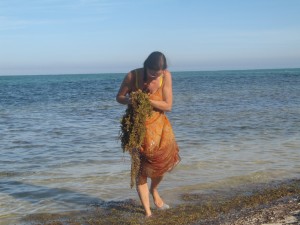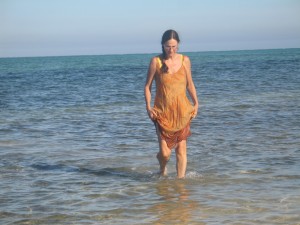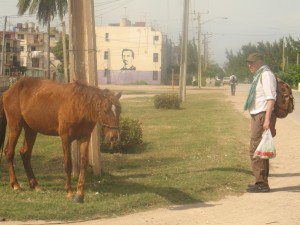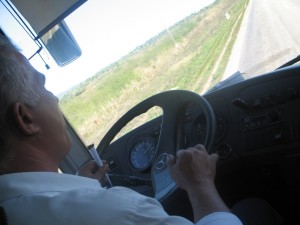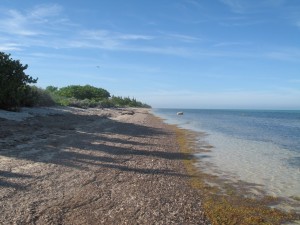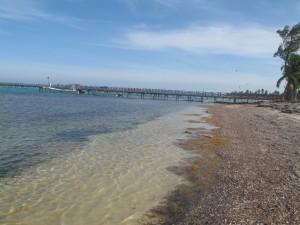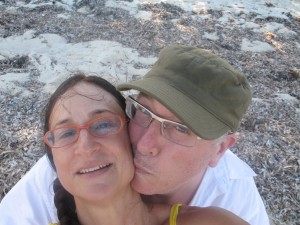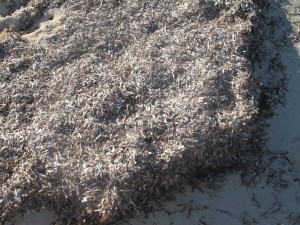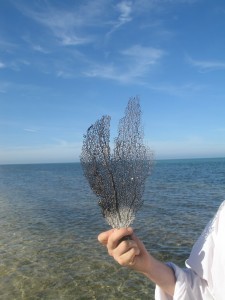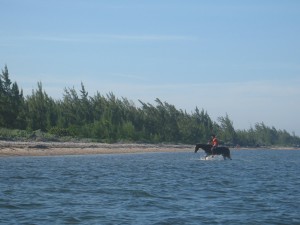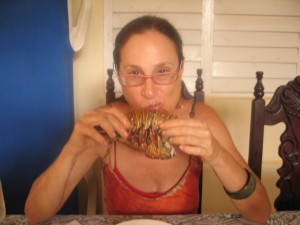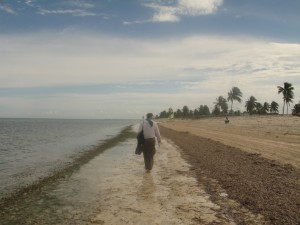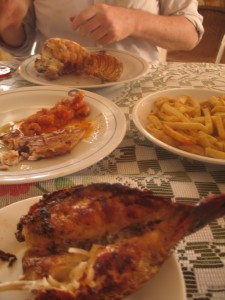While Camaguey is a beautiful city, we intend to spend time in nature during our vacation. The potential destinations from Camaguey are plentiful, but the logistical solutions are not. Within a couple of hours of Camaguey lies an archipelago of small islands – “cayos” that appear to offer our first opportunity for Caribbean style sun, sea, sand and rest.
.
We surprise our grandmotherly host by telling her we are taking a bus to the beach at Santa Lucia. She had told us that we could only get there by taxi (for $60.) After talking to the locals in the streets, we find out there are buses – however these are for trabajadores – “workers” in a wide range of service- oriented jobs who work for the hotels on the cays.
.
Technically Cubans and foreigners are not encouraged to interact with each other and tourists/travellers are gently guided through a system of “foreigners only” buses, hotels and Casa particulares. In fact, many of the “all inclusive resorts” hotels are set on idyllic beaches, where Cubans are not allowed. Think about that: their country, but they are not allowed. Besides the philosophical problems we both have with this proposition (shades of black South Africans not being allowed on South African beaches during Apartheid), there is also the fact that the reason to go to Cuba is in large part due to the joy of meeting and interacting with Cubans! Cuba without Cubanos is like Cappuccino without milk. Doesn’t work.
.
The workers’ bus drivers are not allowed to take foreigners. However, as is often the case, there are always those willing to take a chance for a few dollars. The risk is being stopped at the toll booth, where the road to the cays begins. The risk for the driver is a heavy fine, and for the traveller the risk is to be asked off the bus at the check-point, with no means of travel to continue onward to the beaches. It’s early in the trip, and if we get chased off the bus, we’ll have plenty of time to recover.
.
Hooking up with a willing bus driver is a bit chaotic, but soon enough we are on our way to Santa Lucia’s beachfront. The bus is very crowded. I (Peta) ride the whole way sitting on the small step up to the aisle of the bus, right next to the driver. His elbow bumps my knee when he changes gears, and Ben is sitting on the floor behind me (and later scores a seat when someone gets off the bus.) The driver and I enjoy on and off conversation, although mostly I read my book and accept his gifts of mani, roasted “peanuts” in little paper tubes that he has bought from the mani guy that has hopped on the bus. (The peanuts are 5 cents for a small tube.)
.
.
The bus drops us off outside the most economic hotel at the beach ($30 a night.) There are a few other smallish hotels. They all seem to be more or less of the same Soviet 60’s style… somewhat deserted with not many visible guests, yet a clean room, comfortable bed and HOT shower and it is a short walk from our room to the beach.
.
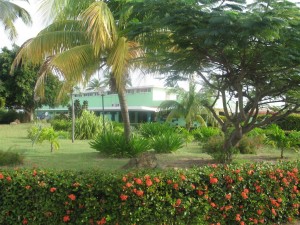
Breakfast is a big bomba (papaya) which we bought on the street in Camaguey, with chia and granola from Granada.
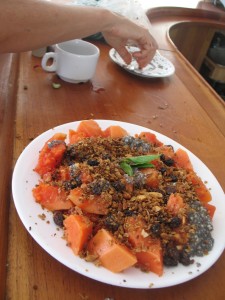
.
.
.
.
The beach is covered in what looks at first like finely shredded taupe paper in piles undulating near the water line. Ben names it “Watergate Beach” due to the enormous amount of shredded “paper.” It is actually dried seaweed, soft to walk on and a very fun and lovely visual adding a soft grey tone to the beach
.
.
The water is a bright turquoise blue with sections that are darker due to the seaweed underneath. There are a few local families on the beach. We walk a bit further past the hotels and quite soon have beach and water to ourselves, except for a young boy who takes his horse into the water and goes out quite far, to wash the horse.
.
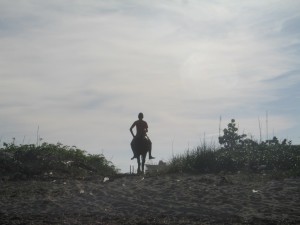
.
While we have scored early (first day of our arrival) by finding organic greens, man does not live of grass alone (well, not this one anyway). We have read and verified through personal experience that there is a large gap between the quality of meals served at casas particulares and what one can find at “restaurants”, let alone at resort or hotel restaurants. As foodies, avoiding a bad meal is worth some effort, and finding good food is worth some sleuthing. Sleuthing indeed is required in Santa Lucia.
.
There is a guy raking the beach for debris in the morning and Ben makes his move in search of good local food. We are told he can take us to a fishermans’ house, and the fisherman’s wife will make us the catch of the day. We meet him at the bus stop and he tells us to follow him, but to walk behind him and tell no one, as otherwise he could lose his job at the hotel. Cubans who interface with foreigners are carefully screened and this is definitely not a scripted encounter. We walk past a few small houses, a few small inner city looking apartment buildings and Ben is worried we will land up in some small back alley or dark kitchen eating mediocre food.
I tell him tranquilo, not to worry, it will be good. And so we find ourselves in a lovely big bright kitchen being served delicious lobster (again) with salad and home made French fries. Yum!
.
.
.
Locals tell us that there is a tiny fishing village fairly nearby. In the late afternoon we start walking along the road knowing we will find good seafood “at the end of the road.” A bicitaxi comes along and we jump aboard as he rides us along the sand road through the swampy areas of scrub and ocean and sand, 30 minutes away.
We can hear and see a flock of bright pink flamingoes in one section of the lagoon. The bike driver delivers us to his friend whose mother is a good cook and she has a palador (houses that are authorized and licensed to operate as small restaurants.)
.
The lobster is fresh and delicious and accompanied by salad and home made French fries. Perfect! We repeat this combination of lobster/salad/homefries many times in the next few days.. happily.
.
We walk around the small enclave of houses to see if there are any Casa Particulars offered in the village, and find one that is right on the water. If we can stay overnight, we can easily go bird-watching in the early morning.


